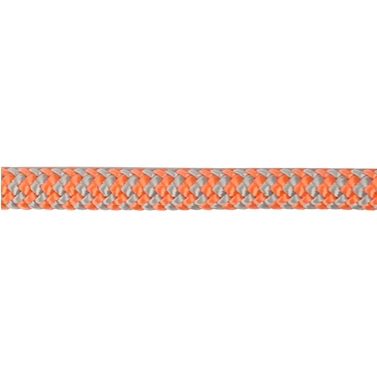In the world of vertical professions and adventures, the rope is not just a tool, it’s a lifeline. Whether scaling the rugged cliffs of Snowdonia or meticulously pruning the overgrown branches of an ancient oak in the heart of The Cotswolds, the rope you choose is your silent partner, ensuring your safety and facilitating your task. However, not all ropes are created equal. For instance, Arborist and climbing ropes are tailored for distinct purposes. While they may seem similar to the untrained eye, their differences are profound and critical.
This article delves into the core distinctions between arborist and climbing ropes, dissecting their material, construction, stretch, strength, and functionality. Armed with the right knowledge, making an informed rope choice won’t just enhance your efficiency; it could be a life-saving decision.
The backbone of any rope lies in its material and construction, which are tailored to meet the demands of its intended use. Let’s unravel the distinctions between arborist and climbing ropes in these aspects:
Climbing Ropes: Primarily made of nylon due to its excellent elasticity, shock absorption, and durability. The Marlow Dynamic ropes, for example, embody these traits, supporting climbers during their vertical endeavours.

Arborist Ropes: Typically constructed from polyester or polyamide due to their resistance to abrasion and environmental factors, crucial for the rough and demanding nature of arboricultural work. The Arbor Response rope from Southern Ropes is a testament to this, offering durability and reliability amidst the rigours of arborist operations.

Climbing Ropes: Usually features a kernmantle construction, comprising an inner core (kern) for strength and an outer sheath (mantle) for protection against abrasion and UV damage.
The construction balances between strength, durability, and elasticity, which are essential for absorbing the shocks of a fall.
Arborist Ropes: Often designed with a Braid-on-Braid construction, offering a robust and durable structure ideal for the various mechanical forces experienced during tree work.
This construction also provides a good grip and handling, which is paramount for arborists manoeuvring through branches and foliage.
The functional design of a rope is pivotal in ensuring it serves its intended purpose effectively. Here’s a breakdown of how arborist and climbing ropes are tailored for their respective uses:
Fall Protection: The elasticity in climbing ropes like the Marlow Dynamic, provides a cushioning effect during a fall, absorbing the shock and reducing the risk of injury.
Vertical Ascent and Descent: The ropes aid in smooth ascents and descents, providing a reliable support during climbing expeditions.
Work Positioning: Arborist ropes, such as the Arbor Response, are engineered for work positioning, providing a stable platform for arborists as they manoeuvre through trees.
Load Handling: They are also designed to handle the additional load of equipment and cut limbs, ensuring a safe and efficient operation.
Climbing: Ropes like Marlow Dynamic are your go-to for sport climbing, traditional climbing, or even ice climbing, where elasticity and shock absorption are paramount.
Arboriculture: For arborists, ropes like Arbor Response provide the needed stability and strength, making tasks like pruning, rigging, and removals safer and more efficient.
Understanding the nuanced design and functionality of arborist and climbing ropes empowers users to make informed decisions, ensuring they are well-equipped for the task at hand, be it climbing rugged terrains or navigating through dense canopies.
Safety is the linchpin in both arboriculture and climbing endeavours. Adhering to stringent safety standards and certifications is paramount to ensure the reliability and quality of ropes used in these fields.
Climbing ropes like the Marlow Dynamic adhere to the EN 892 standard, which covers dynamic ropes for mountaineering. This certification ensures that the rope has undergone rigorous testing for its impact force, number of falls, dynamic and static elongation, ensuring it’s capable of safely arresting falls.
Arborist ropes like the Arbor Response are classified as Type A, indicating their robust construction suitable for arborist applications. While there isn’t a universal standard like in climbing, the rigorous testing and classification signify the rope’s capability to withstand the forces encountered in arboriculture.
The safety certifications and classifications of ropes are not mere badges but a testament to their reliability and suitability for their respective applications. Whether ascending the cliffs or navigating through canopies, a certified rope is your trusted companion, ensuring safety amidst the inherent risks of height work.
Choosing the right rope is not merely a matter of preference but a pivotal decision that impacts the safety and efficiency of your vertical endeavours. Here’s a simplified guide to making an informed choice between arborist and climbing ropes:
Understand the Task at Hand
Assess the nature of your task. Is it climbing, rigging, or a combination of both? The functionality of the rope should align with your requirements.
Material and Construction:
Evaluate the materials and construction of the ropes
While climbing ropes often offer elasticity to absorb fall impacts, arborist ropes provide stability and control during work positioning and rigging tasks.
Safety Certifications:
Check the safety certifications and standards the rope adheres to
It’s a testament to its reliability and suitability for your task.
Stretch and Strength:
Consider the stretch and strength attributes of the ropes
These characteristics should cater to the demands of your operations, be it absorbing the shocks of a fall or providing firm support while manoeuvring through trees.
User Reviews and Recommendations
Look for reviews and recommendations from other professionals in your field. Their experiences could provide valuable insights into the performance and reliability of the ropes.
Accessibility and Availability
Explore the availability of ropes and choose one that is accessible and falls within your budget without compromising on quality and safety.
Your rope is your lifeline, whether you’re an arborist or a climber. Making a well-informed decision ensures that you are well-equipped for the challenges that lie ahead, promoting not only your safety but also the efficiency and success of your tasks.


